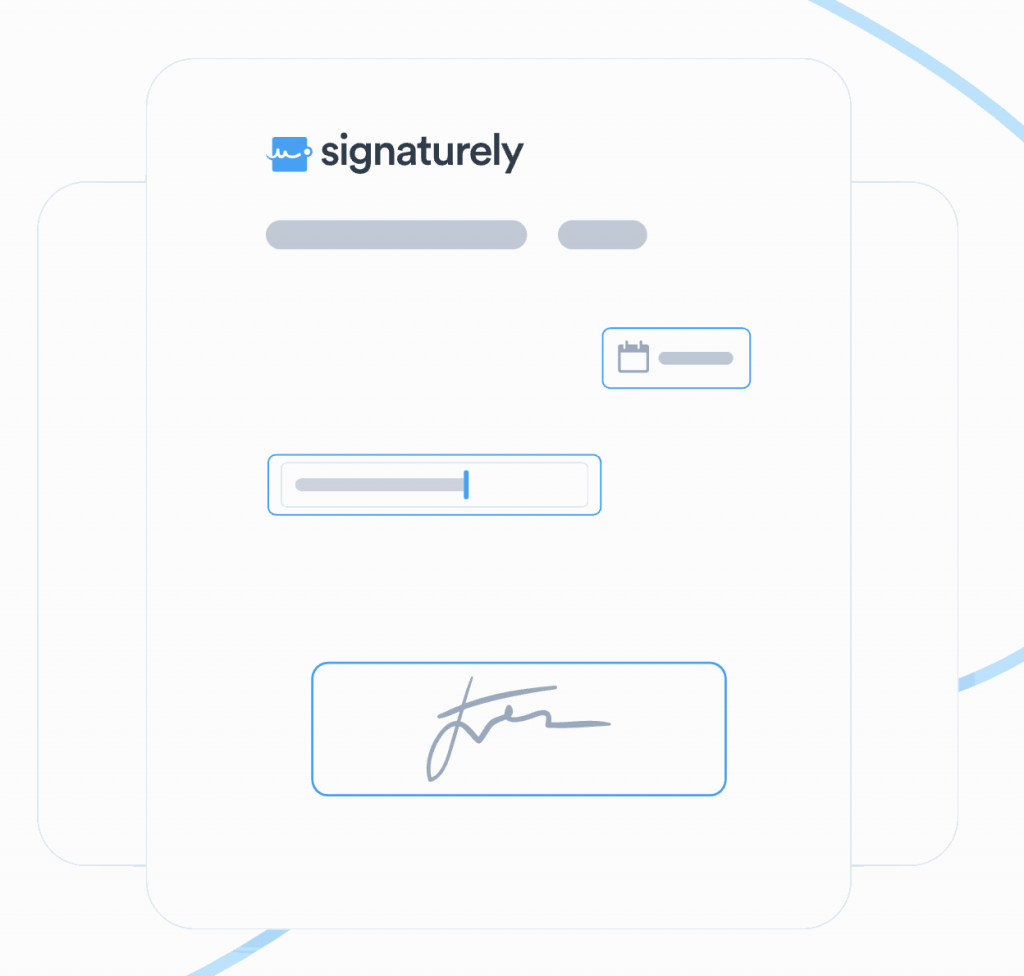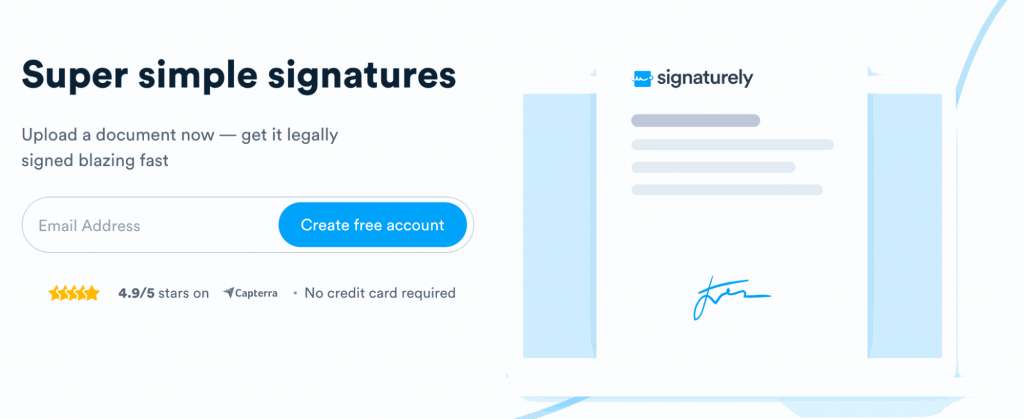Gone are the days when the only way to sign a document was to put pen to physical paper and send it off via fax machine or snail mail. Today, you can sign any contract, agreement, or document from anywhere in the world with any device you have. Electronic signatures are easy to acquire, convenient, and, most importantly, legally binding. Have you ever wondered what the difference between electronic and digital signatures is?
This article discusses the differences between electronic and digital signatures, such as their unique purpose and how they are created.
Let’s get started.
What Is a Digital Signature?
A digital signature is a mathematical mechanism that allows you to sign an electronic document. Recipients of the document can verify the sender’s identity, detect message tampering and spoofing, and establish its authenticity. A digital signature comprises unique characters in the body of a message or at the end of a document that essentially “locks” it and certifies its validity.
Digital signatures are based on public key infrastructure (PKI) or cryptographic operations. A certificate-based digital ID is used for encrypting and decrypting the message itself, so the only one who can open it is the person or entity you sent it to.
Messages can be encrypted using different keys, which means that even if they are intercepted through an insecure channel, they cannot be opened or tampered with.
What Is the Purpose of a Digital Signature?
Digital signatures are used to verify the authenticity of digital messages and documents to ensure their integrity.
For example, let’s say you want to send a digital document that contains sensitive information you need to keep confidential, with no chance of interference or interception by any other party. You can encrypt the document with a digital signature that will allow the recipient to verify that:
1. The message came from you and hasn’t been altered in any way since you sent it, and
2. The message isn’t fake or fraudulent.
Digital signatures can also be used to verify the authenticity of software updates and secure online banking transactions.
How Does a Digital Signature Work?
Digital signatures utilize cryptographic operations or asymmetric cryptography. A public key is used to encrypt the message, while a private key can decrypt it.
So if you want to send a digitally signed message, you need certificate authority access to the digital certificate. You can encrypt the document’s contents using your public key so that only the recipient can read the signed document. And your recipient can use their key to decrypt it when they receive it.
How to Create a Digital Signature
You must use dedicated software such as Signaturely to create a digital signature. They’ll make securing your signed documents much more convenient.
All you need to do is upload your document to your digital signature technology platform of choice and generate the digital signature and a digital certificate from there.
Some digital signature platforms integrate into your preferred document creation software so you can create a signature with just one click of a button.
Example of a Digital Signature
Let’s look at an example of how a digital signature works. Say you’re the CEO of your company and want to send a confidential contract to one of your business partners located outside of the country. You and your business partner feel it’s too risky to send the contract physically for fear that it may be intercepted.
To ensure your contract stays confidential, you use software to create a digital certificate or digital signature certificate and digitally sign an encrypted version. A unique fingerprint is attached to the contract, and your business partner can use their private key to decrypt it. This will verify its authenticity and the corresponding digital identities upon receipt.
Click here to learn more about digital signatures.
What is an Electronic Signature?
In contrast to a digital signature, an electronic signature is much simpler to create and use. An electronic signature is an electronic sound, symbol, or process that captures a signature in digital form, much like signing a physical contract manually using a pen.
Electronic signatures are electronic versions of handwritten signatures, bound digitally with the signer’s identity, the person intending to sign, and the exact moment the document was signed. This convenient signing method has revolutionized modern workplaces and is now commonly used in business transactions alongside digital signatures.
How to Create an Electronic Signature
If you want to sign an electronic document securely and quickly, you need electronic signature technology such as Signaturely.
You can sign a piece of paper, scan it, and use the scanned image to create a scanned signature. You can also use your mouse or your laptop’s trackpad to draw your electronic symbol and save it as an image file. There are online signature makers that will allow you to type your name, choose a certain font, and save the file to use on your next signature line.
Here are a few guides for specific signature technology implementation for an easy signing process:
- How to create an electronic signature in Word
- How to create an electronic signature in PDF
- How to create an electronic signature in Google Docs
You could also use a free document signing app.
Example of an Electronic Signature

Electronic signatures are used by remote-working teams all over the world. Instead of waiting days or weeks for physical papers to arrive via snail mail, signing digital contracts, financial documents, non-disclosure agreements, and other crucial work files in a flash is easy. The person signing can be halfway across the world, and the transaction can still be completed in seconds!
Are Electronic Signatures Legally Binding?
The Electronic Signatures in Global and National Commerce Act (ESIGN Act) is a federal law signed in 2000. It states: “[A contract or signature] may not be denied legal effect, validity, or enforceability solely because it is in electronic form.” This essentially gave electronic signatures the same legal status as written signatures.
So yes, electronic signatures are legally binding and will hold up in court. Documents that are electronically signed are protected and legally enforceable in court. E-signatures are legally binding in many other countries, including Canada, the United Kingdom, Japan, India, New Zealand, and Australia.
Click here to learn more about electronic signature legality.
Digital Signature vs. Electronic Signature — What Is the Difference?
| Digital Signature | Electronic Signature |
| Document encryption | Document verification |
| Electronic fingerprint | The electronic version of wet signatures |
| Unique public and private keys for security | Reflects signer’s identity, intent to sign, and the date and time of signing |
| Highly secure | It can potentially be tampered with |
Digital and electronic signatures are similar in some ways, but they have many key differences.
Digital signatures are significantly more secure than electronic signatures. Because of the high-end encryption used to create them, they are resilient not just to third-party access or tampering but to viruses and malware. The only way to open a secured digital document and inject malicious software is if you have access to a unique private key that is only meant for the recipient.
In contrast, electronic signatures are electronic versions of handwritten signatures. They’re commonly used in business transactions, but they do not have the level of security that digital signatures provide.
For this reason, digital signatures and e-signatures are used very differently. A digital signature is used to encrypt and digitally “mark” a document. It’s then re-encrypted using the recipient’s private key. An electronic signature is simply a tool used to sign a document online.
While both aim to verify a document’s authenticity, a digital signature is best used to prevent fraud, while an electronic signature provides convenience.
Both can protect a document containing susceptible information. A digital signature will encrypt the document itself to ensure a third party cannot access it, and an e-signature can be used to close the agreement contained in the document.
Digital Signature vs. Electronic Signature – Which Is Better?
Both digital and electronic signatures serve specific purposes.
For businesses, a digital signature is the most prudent choice. Digital signatures are highly secure and resistant to computer viruses and malware. Furthermore, they cannot be forged or stolen.
Electronic signatures have fewer security features, which can still benefit your business. They can help streamline your workflow and ensure your documentation process is secure and exponentially more efficient.
In most cases, using both electronic and digital signatures is a good idea. This way, you can verify the authenticity of documents digitally while still being able to use advanced electronic signatures for signing contracts with your business partners.
For this reason, you should look into reliable digital signature solution providers like Signaturely.
Here’s How to Generate E-Signatures for Free
If you’re worried about the legality and security of your e-signatures, make sure you’re using software you can trust.
Free Electronic Signature Creator – Signaturely

With Signaturely’s electronic signature solution, you can sign contracts with utmost simplicity and convenience. You’ll never have to worry about whether or not your digital signature is legally valid again.
Key Features of Signaturely
- Seamless collaboration
- Time-saving templates
- Legal validation process
- Automated reminders
- Easy access and management
- Paperless
- More security features
Digital Signature vs. Electronic Signature — Facts To Remember
Digital signatures are forms of encryption that are reliable and secure. However, they are only as good as the software used to create them.
Electronic signatures are generally easier to use than digital signatures. However, they aren’t as secure or reliable since the document is not encrypted. Be sure to use well-known e-signature solutions you can trust, such as Signaturely.
